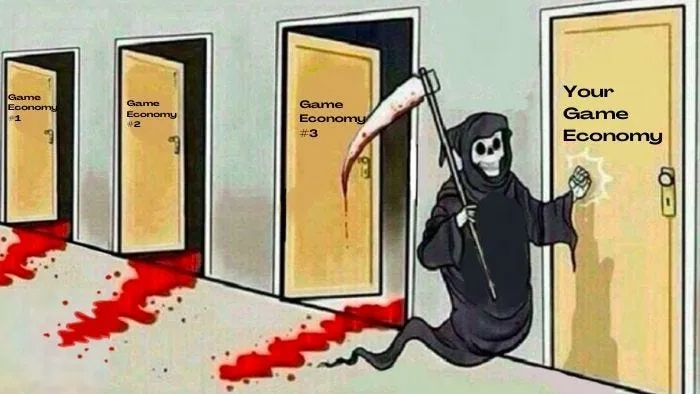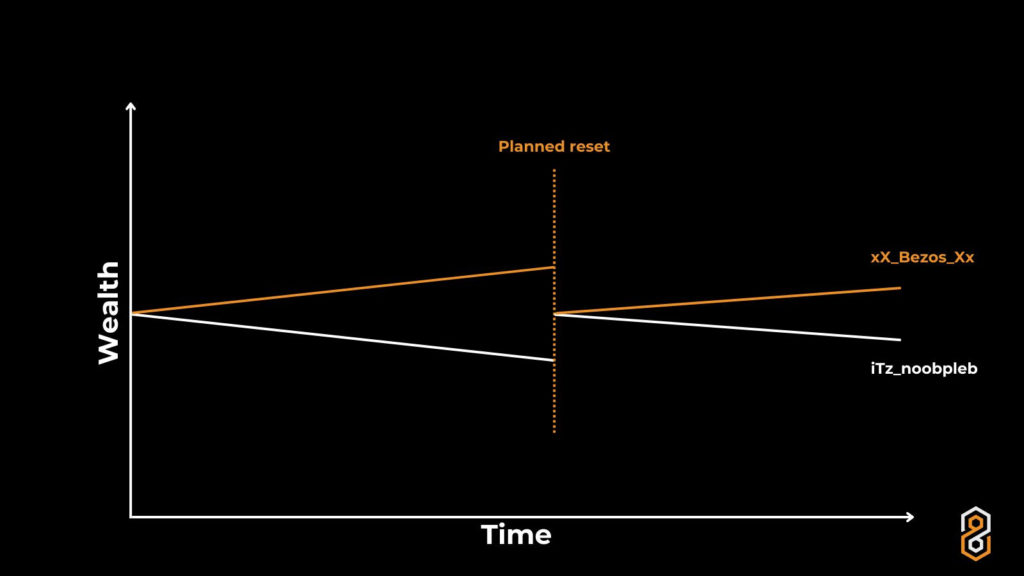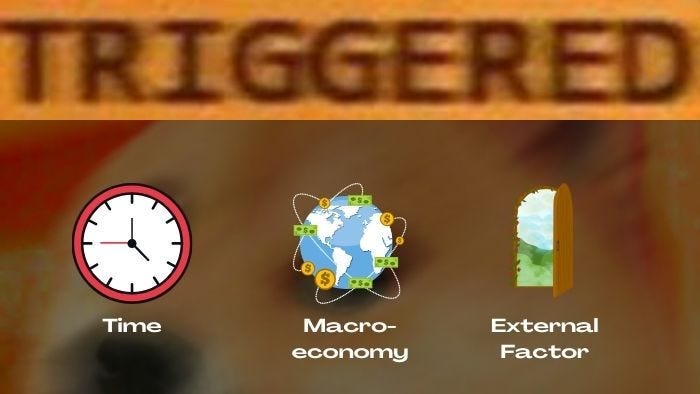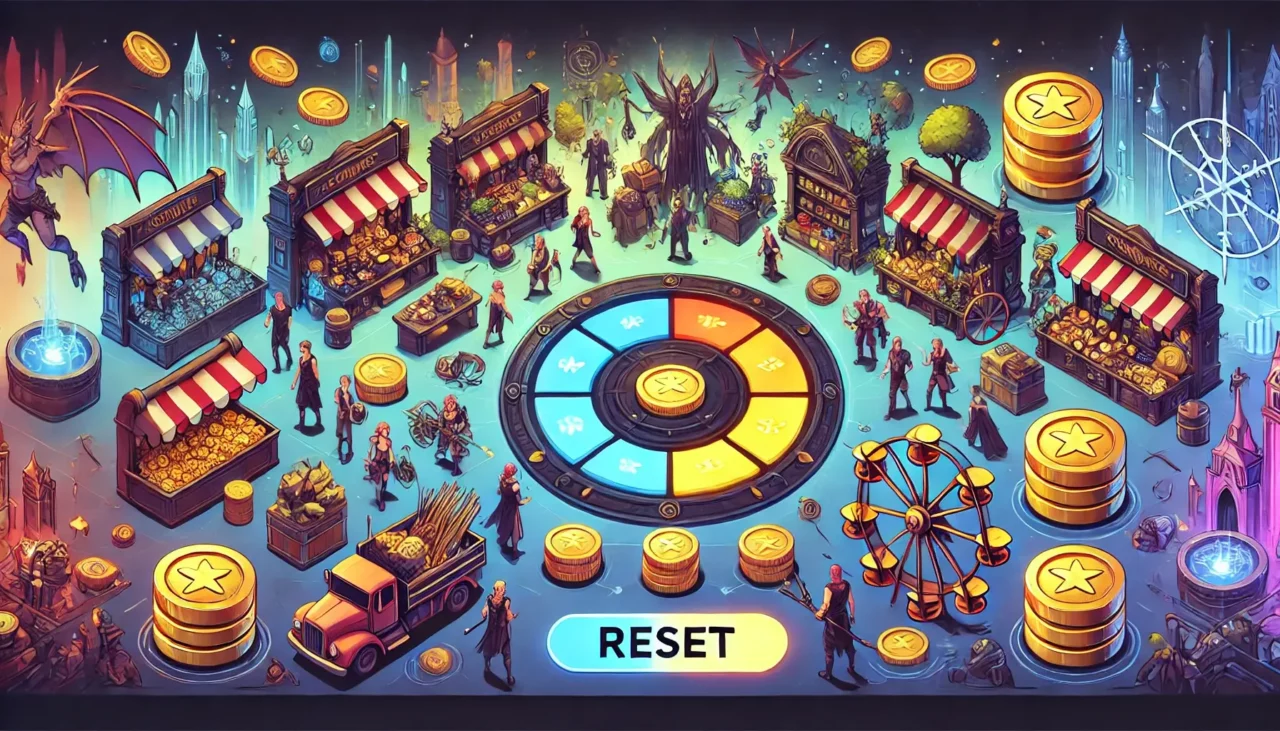This article is a guest post by 0xKepler, Senior Token Engineer over at TAU Labs, and we’re stoked to share it with you here. 0xKepler explores the idea of economic resets in gaming, looking at how they can shape virtual economies and gameplay.
Table of Contents
- Introduction: The Idea Behind Economic Resets
- Heaven and Hell of Economic Resets
- Design Considerations for Economic Resets
- Examples of Economic Resets
- Conclusion
Introduction: The Idea Behind Economic Resets
The idea for this article came to me after publishing this initial tweet, introducing the idea of designing game economies with their non-permanence in mind.
Even the best games die after a couple of years, so why plan a forever economy? By freeing us from some of the shackles of traditional economics, game economists open up their design space. This is especially important since we are facing other additional constraints compared to the physical world. There, people have to participate in the economy, they don’t have a choice. But players just leave games if they aren’t fun (whatever that means) or don’t feel fair (I won’t define this term either here). Result: Lifetime Value decreases.

There are 2 reasons why I think this matters more for crypto games than their Web2 counterparts:
- Open economies are 10x harder to balance than closed economies
- Blockchains add permanence and financial value to assets. That means their death has meaning. And only if death is possible, permanence is meaningful.

Heaven and Hell of Economic Resets
First, let’s quickly define economic resets as “server-wide natural forces that have the potential of setting back players’ progress and destroying (parts of) their assets.”
As with all game design decisions, designing for economic resets comes with pros and cons. Throughout the article, I’ll also provide pointers on how to manage the downsides of the approach.
Heaven
Economic sustainability
Economies work in cycles. These cycles are formed through an overlay of multiple factors that naturally develop in waves: Kondratiev waves (ironically also called supercycles), Kitchin cycles, Juglar cycles, and Kuznets cycles.
While these waves are not deterministic, unlike Bitcoin halvings, we can observe that even though history doesn’t repeat itself, it often rhymes.
“There will be no next recession” = “There will be no next cycle”

Challenges arise when the amplitudes of waves leave certain ranges. It then becomes difficult to bring them back in a controlled manner. Amplitudes tend to increase over time, making economic crises more likely as the game goes on. That’s where planned resets come in to decrease the risk that waves go out-of-bounds.


Economic fairness
We won’t go into what fairness is as I’m not writing a philosophy paper (and wouldn’t be able to). So let’s just say:
- Players have a subjective opinion of what they deem fair
- They’ll leave when they think they’re being treated unfairly
- Perceptions between players differ
It’s a balancing act between giving everyone a chance and making them feel like they can make a comeback versus taking away progress from leading players.
Coming back to our cycles, we can observe that economic developments are usually path-dependent. For example, the rich get richer. Resets are a way to tackle that increasing inequality.


Preventing staleness
Even when economies do not end up breaking, they tend to converge towards an equilibrium, a state of boredom with limited changes. For example, in 4x MMOs, this happens when alliances have formed and reached peace agreements with each other.
A reset breathes new life in the economy and represents the perfect occasion to mix up the metagame.
Meaningful Metalayer
Having rules and conditions for resets determined at the start allows players to incorporate them into their decision-making. This can, for instance, lead to emergent social gameplay or strategic risk management. Reset conditions are a vast design space, which we’ll partly explore with some examples later.
What’s sure is that players have something to lose, making economic resets a meaningful mechanic in the player psychology.
Capping the ROI of assets
Economic resets can mean that (some) assets die. It’s a design choice. Having unlimited value accrual in NFTs or other in-game assets is challenging as it means infinite extraction for a one-time cost. This invites speculation which can crowd out real player motivations, as seen with in-game land.
Recurring sinks can help but are mostly just a tax on earnings. And when they are related to item upgrades instead of repairs, meaning they boost earnings, the issue of runaway inflation becomes a real threat to the economy.
Putting a cap on ROIs can act as a balancing tool that hinders speculation from going overboard.
Room for Experimentation
The truth is: No one will know what’s going to happen. Definitely, I don’t. We can model economies based on different assumptions and scenarios but will always be surprised by the actual results once our game is live.
As we are unlikely to get it right the first time, allowing ourselves to learn and make changes based on new information sounds like a good idea. For instance, seasons are one way of implementing such a system.
Hell
Disturbing player progression
As mentioned above, player progress gets at least partly reset. Players have to accept that and not perceive it as unfair.

Referencing “Inferno” from Dante Alighieri’s “Divine Comedy” so people think I’m smart even though I never read the book nor played the game
Limited opportunity for value accrual
Design Considerations for Economic Resets
There are 2 key levers economists have when thinking about economic resets: Trigger conditions and reset intensity.
Trigger Conditions
This answers the question of when an economic reset should take place. On one hand, we want it to happen before the economy leaves the acceptable range. On the other hand, the economy should have enough room to support player autonomy — the feeling that decisions matter, have consequences, and that different players can have divergent results. It also gives more time for meta gameplay to emerge. tl;dr: not too frequent, not too late.
Teams can utilize various trigger conditions. I would group these into 3 categories but there may be more.
- Time: Reset progress after a certain period. These are basically pre-determined seasons. Easy to plan ahead for players; No room for surprise.
- Macroeconomic indicators: Monitors the health of the economy, especially player behavior that is seen as negative (e.g. resource hoarding). When the indicator gets close to the upper or lower bound of the acceptable range, an economic reset is triggered. As the behavior of players is the trigger here, it opens up the possibility of emergent social meta gameplay.
- External indicators: For example, ETH TWAP. Brings in an additional element foreign to the game — can be an exciting new gameplay layer but hard to plan for and may not be related to economic health. As a result, this mechanic is more suitable for smaller but more frequent resets to minimize the risk of resets coming either too late or being too strong based on an outside indicator showing a tail risk event.

In all cases, players must accept the reset
- When players think they could have saved their progress, they may be more likely to tolerate the outcome. This requires a quasi-predictable source of chaos, like the ETH price
- When the metagame adds so much enjoyment that it cancels out the destruction of progress. For example, the social metagame that emerges from it. Or turn the reset into a big event that brings players together.
- Being clear about the rules from the start and setting player expectations early
- Organic integration of reset mechanics into the world (e.g. climate, natural disaster)
A genre that fits well with economic resets is looplikes. Here, resets are part of the game and do not represent failure, in contrast to roguelikes.
Reset Intensity
This answers the question of how much of the players’ progress gets reset. Intensity has two dimensions, the macro and the micro level. The macro level describes how many assets get sucked out of the game economy in total. The micro level looks at differences between players — redistribution. While everyone loses progress, some players may lose more than others to increase “fairness”.
The intensity of resets should be informed by your progression system and the reset frequency.
Examples of Economic Resets
Welcome to NOR
NOR was the first team I came in contact with that pushed for economic resets and motivated me to think more deeply about the topic.
NOR divides its tournaments into seasons. Each “Eternal Return” can fit multiple seasons into it, with a cataclysm happening at the end of it
- All assets are reduced to their value in FATE (NOR’s platform token). Players can protect their assets by placing them in a vault
- In NOR, land parcels are “placed” to indicate their closeness to the different games featured on the platform, which influences the flow of FATE. Placements are reset with every cataclysm. This is a great example of retaining the potential value of assets through resets but resetting their existing realization of that value.
- Any FATE that exists outside the platform is irrevocably destroyed
- Players can reinvest into assets for the next “Eternal Return”
- Economic adjustments are made. For example, if there’s more player demand, the FATE pool will increase
Doomsday
Doomsday is an onchain survival game/war of attrition game that revolves around the concept of economic destruction. Players mint and reinforce settlements while disasters rage until only one settlement remains that wins the prize pool.
Phase 1 — Renaissance
During this phase, players can only mint settlements. The duration of the “Renaissance ‘’ is determined by players’ minting behavior (macroeconomic indicator). The timer is extended when someone mints a settlement but by a decreasing amount every time. When the timer reaches zero, the world enters phase 2 — the “Dark Age”
Phase 2: Dark Age
Every 75 blocks (time-based event), 1 one 4 possible disasters will hit a part of the map. Players can reinforce their settlements (for each disaster type) which means they can survive one disaster of that type. Players can also abandon their settlement to receive a small portion of the prize pool relative to how long their settlement survived.
Mithraeum
To combat inflation, Mithraeum uses an autonomous mechanic called Wipe Threat. When too many players hoard resources rather than utilizing them (macroeconomic indicator), they get punished by a wipe, destroying valuable resources.
The wipe threat also leads to new emerging social gameplay:
Players, eager to keep their progress as long as possible, will unite in larger structures and try to fairly distribute the tasks of burning the resources among themselves and punishing those guilty of “hoarding” as well as those who do not want to take on such obligations.
Players who are lagging behind in development can try to interfere with the players from the first point by active actions, trying to bring the wipe closer, which will equalize the chances for everyone
The reaction of the market to the possible outcome of such wars will be funny. Depending on the intensity of the struggle, the price of game resources (tokens) will either soar, in anticipation of the next phase of the war of attrition, or fall sharply in fear of the prospect of a wipe, because then these tokens are guaranteed to depreciate
Café Cosmos
The game features smaller, frequent resets based on an external factor — ETH price.
The ETH TWAP price affects the weather conditions in the game. Bad weather can destroy resources. This introduces a non-random deflation mechanism. Players can’t predict what will happen to the ETH price but speculate around it which adds a fun gameplay element that is deeply rooted in the crypto-native audience.
Conclusion
Economic resets offer a broad design space and can add new gameplay layers, provide tools for economic sustainability, and leave room for economic experimentation. In this article, I tried to give some pointers on how to design such systems.
The first blockchain games are making use of economic resets, such as NOR, Mithraeum, Doomsday, and Café Cosmos.
There are other ways to implement asset deflation or to redistribute assets, for example voluntary individual resets like prestiging. But economic resets present an elegant mechanic that does both while adding to the game experience, thereby increasing the acceptance from players. This is especially important in open economies where players trade real world value.
About the author:
0xKepler is a former performance marketing manager with a passion for finding effective ways to use tokens to drive real results. A researcher in gamification, he focuses on consumer psychology and how it influences player behavior. With experience in crypto since 2017 and as a tokenomics engineer since 2021. You can follow him on X for more insights and updates, or check out their work at TAU Labs.


